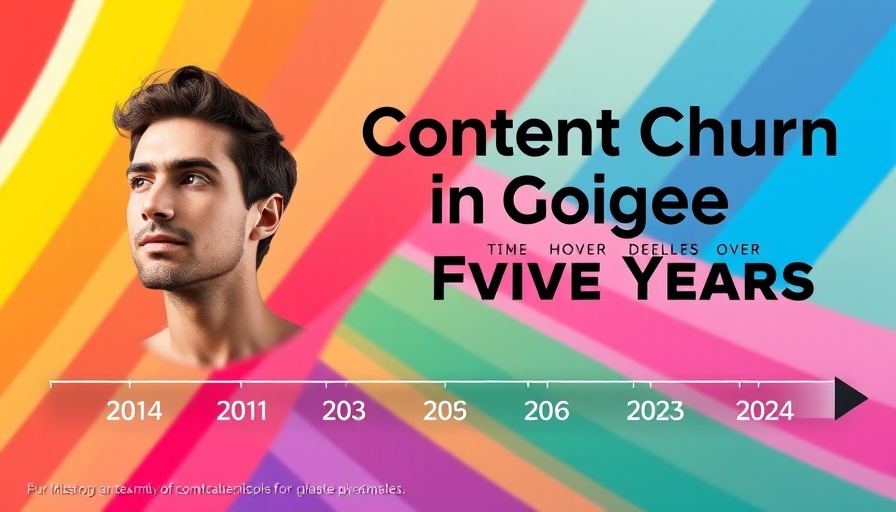
Understanding Content Churn: A Deep Dive
In recent years, the digital landscape has undergone significant transformation, largely driven by the rapid evolution of artificial intelligence and relentless content creation. As detailed in a recent article, content churn on Google has more than doubled, marking an increase of 127% between 2019 and 2024. This statistic encapsulates a broader trend that is reshaping how businesses strategize their digital marketing efforts.
Impact of Google’s Algorithm Updates on Content Creation
Updates from Google significantly impact content visibility and ranking. The latest core updates, particularly those rolled out in 2023 and early 2024, have prioritized quality over volume. According to a report, the March 2024 Core Update specifically targeted low-quality content, emphasizing Google's intent to weed out unhelpful, spammy entries from search results. This is crucial as businesses strive to remain relevant and maintain visibility in an oversaturated market.
AI’s Role in Content Generation and Churn
The rise of AI tools, including OpenAI's ChatGPT, has led to an exponential increase in content generation. While this technological advancement offers opportunities for enhanced productivity, it has simultaneously resulted in an overwhelming amount of low-quality content. Google’s adaptations to its algorithms reflect an industry-wide recognition that AI-generated content, if not carefully curated, can contribute to an undesirable user experience. Thus, the relationship between content churn and AI is complex; businesses must balance leveraging AI with ensuring the quality and relevancy of produced content.
Strategies for Adapting to Increased Churn
With the rapid rise of content churn, professionals, business owners, and marketers need to adapt. This adaptation includes adopting robust content marketing strategies that emphasize quality. Here are some actionable insights to consider:
- Enhance Content Quality: Focus on producing in-depth, valuable, and original content that addresses user needs and concerns. Employ techniques such as storytelling and data-backed insights to engage audiences effectively.
- Monitor Competitors: Keep an eye on competitors who may be impacted by the same updates. Analyze their content strategies and learn from their successes and failures.
- Embrace Analytics: Utilize analytics tools to measure engagement and effectiveness. Track how content performs post-update to pivot strategies as necessary.
- Continuous Learning: Stay informed on digital marketing trends, especially those related to SEO updates and algorithm changes. Engaging with resources like industry webinars or online courses can offer new perspectives on optimizing content.
- Cross-Team Collaboration: Encourage collaboration between technical SEO professionals and content creators to ensure that every piece of content fits both user experience and search engine requirements.
Preparing for the Future: Content Churn and Beyond
As we continue to navigate an increasingly digital-focused environment, understanding content churn becomes imperative for effective digital marketing. Google's updates will persist, and the market's dynamics will continue to evolve. Brands that prioritize high-quality, user-centric content while remaining agile in their strategies will not only survive but thrive amidst these ongoing changes.
This proactive approach can differentiate businesses in the competitive landscape and help establish authority and trust with audiences. Ultimately, as businesses adapt to the realities of content churn, their focus should remain on delivering exemplary value, assuring they remain at the forefront of their industries.
 Add Row
Add Row  Add
Add 




Write A Comment